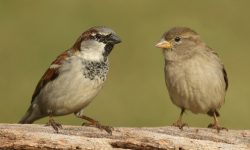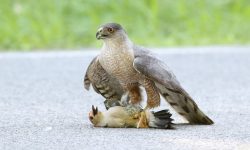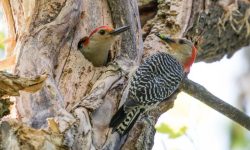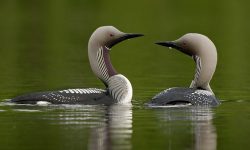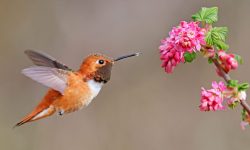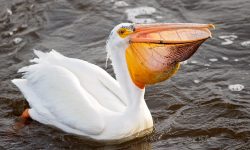Geese are fascinating creatures with behaviors and diets that may surprise many people. Whether you’re observing them in the wild or encountering them in your local park, understanding what geese eat is not just about knowing their food preferences—it’s about understanding their role in the ecosystem and how they adapt to their environments.
In this article, we will explore the surprising facts about what geese eat, including the variety of foods they consume and how their diet differs depending on their environment, seasons, and even migration patterns.
The Basics of a Goose’s Diet
Geese are herbivores by nature, which means they primarily eat plant-based foods. However, they are opportunistic feeders, and their diet can vary widely depending on the time of year, their location, and what food sources are available. A goose’s diet consists mainly of grasses, seeds, aquatic plants, and some small invertebrates. Their long necks and sharp bills allow them to graze effectively and forage for food in both terrestrial and aquatic environments.
Grasses and Plants
One of the most common foods for geese is grass. They are often seen grazing in fields, meadows, and lawns. Geese prefer tender, young grasses, which are high in nutrients. Their ability to eat large quantities of grass helps to manage plant growth and contributes to the balance of local ecosystems.
Seeds and Grains
Geese are also known to consume seeds and grains. They often forage in fields where crops like corn, wheat, and barley grow. These grains provide geese with essential carbohydrates, which are crucial for their energy, particularly during migration periods when they need to stock up on food before their long journeys.
What Do Geese Eat During Migration?
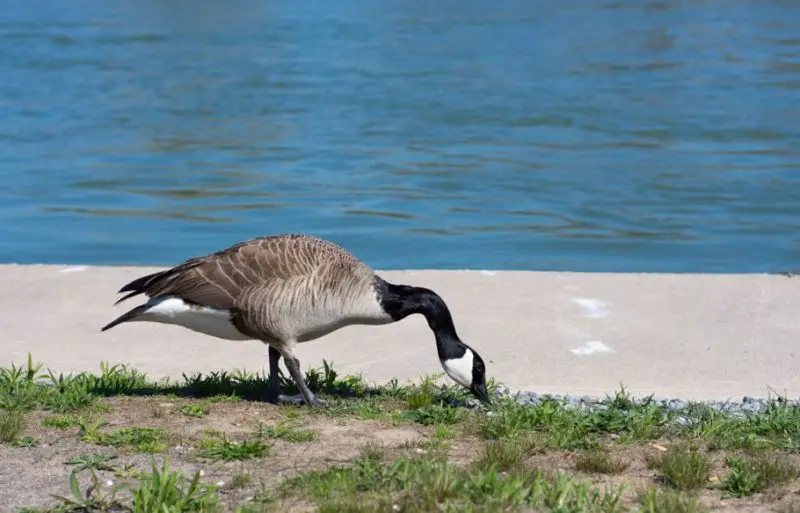
Migration is one of the most significant periods in a goose’s life cycle, and during this time, their diet becomes even more critical. Migrating geese need to build up energy stores to fuel their long travels. The foods they consume during migration are typically high in fat and carbohydrates, providing them with the necessary sustenance for the journey ahead.
Aquatic Plants and Algae
As geese migrate, they often stop at wetlands, lakes, or ponds to feed. These aquatic environments provide them with a rich variety of plants, including algae, pondweed, and cattails. These plants are easy to access and provide a rich source of nutrients, including vitamins and minerals that geese need during migration.
Insects and Small Invertebrates
Insects and small invertebrates become more important during migration, especially in areas where geese are moving through transitional zones such as marshes or wetlands. Geese will feed on a variety of insects, including dragonflies and beetles, which provide essential protein.
Seasonal Changes in Goose Diets
Geese are highly adaptable birds, and their diet changes seasonally to align with the availability of food sources and to ensure they maintain their health and energy levels throughout the year. These changes are essential for their survival, especially in colder months and during migration. By adjusting their diet, geese are able to prepare for the challenging conditions they face during the winter and migration periods. Understanding how their diet evolves with the seasons offers insight into their remarkable ability to thrive in various habitats.
Spring and Summer Diet
The warmer months bring an abundance of fresh vegetation, which plays a critical role in the diet of geese. During the spring and summer, geese focus on foods that are high in nutrients and support their reproductive cycles and molting process. Their diet during these months primarily includes:
Young Grasses
Grasses are the cornerstone of a goose’s diet during the spring and summer. New, tender grasses are high in water content, which helps geese stay hydrated during the warmer months. Fresh grasses also contain essential vitamins and minerals, which are crucial for geese, especially when they are feeding and caring for their young. Young grass shoots are easier for geese to digest and offer an excellent source of fiber, promoting healthy digestion. Geese will often be seen grazing in fields, meadows, and grassy wetlands, where the growth of these grasses is abundant.
Aquatic Plants
Aquatic plants are a key part of the goose’s diet during spring and summer, especially in wetland habitats. Geese are often seen feeding on plants in shallow water, such as pondweeds, cattails, and algae. These plants are rich in nutrients, including proteins, carbohydrates, and fats, making them an essential food source for geese, particularly during the breeding season when they need more energy for reproduction and raising their young. Additionally, aquatic plants play a vital role in helping geese regulate their body temperature during the warmer months by providing moisture and helping them stay cool.
In areas with abundant wetlands or lakes, geese will forage for these aquatic plants throughout the summer. The abundance of fresh plants helps geese stay nourished and provides the necessary energy for molting, a process during which geese shed and grow new feathers.
Seeds
As the growing season progresses, geese also turn to seeds from various plants, including grasses, weeds, and wildflowers. In the spring, plants begin to mature, and their seeds become more accessible to geese. These seeds are an important addition to their diet, providing them with a concentrated source of carbohydrates and fats. While seeds may not be as plentiful as grasses or aquatic plants during the spring and early summer, geese will continue to forage for seeds as they mature throughout the season.
Seed consumption helps geese build energy stores needed for their upcoming migration and the challenges of colder months. Geese can be seen foraging in agricultural fields, wetlands, and grasslands, picking up seeds from plants like dandelions, thistles, and clover.
Fall and Winter Diet
As the temperature drops and the days shorten, geese’s dietary needs change to accommodate the more difficult environmental conditions. In preparation for the colder months and their long migrations, geese shift their focus to more calorie-dense foods that will help them store energy and maintain their body temperature. The fall and winter months are critical for geese, as they need to build up fat reserves before migrating and to survive the harsh winter conditions. Their diet during these colder months is typically centered on high-calorie, nutrient-rich foods.
Corn and Grains
One of the most important food sources for geese during the fall and winter is grains. As fields of crops are harvested, geese often descend on agricultural areas to feed on leftover grains such as corn, wheat, and barley. These grains are calorie-dense and rich in carbohydrates and fats, making them ideal for geese as they prepare for migration or endure the colder months.
Geese can often be seen in large flocks, grazing in fields after harvest. This behavior is crucial during migration, as the geese need to stockpile energy in the form of fat to fuel their long journeys. The abundance of grains available in agricultural regions during the fall and winter months provides geese with the sustenance they need to build up fat stores and stay strong throughout the season.
In addition to harvested grains, geese also forage for seeds in the wild, including those from grasses and other plants. These seeds provide additional nutrients and can be a vital food source when other options are limited.
Berries and Fruits
During the fall, geese also forage for fruits and berries that are available in certain regions. As plants produce their fruits, geese take advantage of this nutrient-rich food. Common fruits that geese eat include berries from shrubs like elderberry, huckleberry, and juniper, as well as fruits like apples and pears that may be found in orchards or on the ground after falling from trees.
These fruits are high in sugars and vitamins, which provide geese with a quick energy boost. Berries and fruits also provide important antioxidants that help keep geese healthy during the transition into colder months. Although not as crucial as grains and seeds, these fruits are an important supplemental food source that helps geese build their energy reserves before winter sets in.
Nuts and Seeds
Another important food source during the colder months is nuts, particularly acorns, which are rich in fats and protein. Geese in areas with oak trees may forage for fallen acorns, which provide them with the necessary fats to maintain their body temperature in the cold weather. Acorns are high in calories and help geese build fat stores for both winter survival and migration.
In addition to acorns, other seeds from trees and plants also become important for geese during the fall and winter. Sunflower seeds, for example, are nutrient-rich and easy to consume. As plant life dies off and becomes dormant, geese will forage for these seeds, which offer vital energy to help them survive the winter months.
Geese will also search for seeds in the wild, including those from wild grasses, weeds, and other vegetation. These seeds provide an essential source of protein and fat that is crucial for geese, especially when natural food sources are scarce and temperatures drop.
Geese and Human Food: Are They Safe to Feed?
While geese are herbivores, they have adapted to a wide variety of food sources, and many of them are willing to scavenge for human food. This adaptation has led to geese often being found near urban areas, parks, and picnic spots. However, it’s important to know which human foods are safe for geese and which ones can cause harm.
What Geese Can Safely Eat
Some human foods are safe for geese to consume in moderation. For example, geese may safely eat:
-
Grains: Cooked rice or oats are safe for geese to eat and can provide them with some nutrients.
-
Leafy greens: Romaine lettuce and spinach are good sources of vitamins and minerals.
-
Corn: Geese enjoy corn, but it should be unseasoned and plain.
Foods to Avoid Feeding Geese
While geese may seem to enjoy human food, certain items can be harmful to them:
-
Bread: Bread provides little nutritional value and can cause malnutrition in geese. Feeding geese bread can also lead to a condition called “angel wing,” where the wings grow abnormally.
-
Processed snacks: Chips, crackers, and other processed foods can be harmful due to high salt content.
-
Pizza and fast food: These foods are high in fat and salt, making them unsuitable for geese.
Feeding geese unhealthy food can affect their overall health and disrupt their natural foraging behavior. It’s always better to allow geese to find their natural food sources.
Geese Feeding Behavior: How Do They Forage?
Geese are highly skilled foragers and use a variety of techniques to find food. Their foraging behavior varies depending on the environment and the type of food available.
Grazing
Geese are primarily grazers, often seen with their heads down, nibbling on grass or aquatic plants. Their sharp bills are designed to clip grass efficiently, allowing them to feed for hours at a time. Grazing is most common in open fields, wetlands, and grassy areas where food is abundant.
Dabbling
In water, geese engage in a behavior known as dabbling. Dabbling involves tipping forward in the water to feed on submerged plants, algae, and invertebrates. Geese are often seen dipping their heads below the water’s surface to forage for these foods.
Scavenging
Geese are opportunistic feeders, which means they will also scavenge for food when necessary. This is particularly true in urban areas or during migration when natural food sources may be scarce. Geese can often be seen searching through trash or feeding on leftover food from human activities.
The Role of Geese in Ecosystems
Geese play a vital role in ecosystems as they help control vegetation and promote seed dispersal. Their foraging activities can influence the structure of plant communities, especially in wetland areas where they graze on aquatic plants. Additionally, geese help in the nutrient cycling process by consuming plants and then depositing nutrients through their droppings.
Vegetation Control
By feeding on grasses and aquatic plants, geese help manage the growth of these plants. Without grazing by animals like geese, certain plant species could become overgrown, which could disrupt the balance of the ecosystem. This grazing helps maintain biodiversity by preventing the dominance of certain species.
Seed Dispersal
Geese also contribute to seed dispersal as they eat a variety of plants and then deposit the seeds in different locations through their droppings. This process helps to establish new plant growth in different areas, contributing to the spread of plant species.
Conclusion
Geese are adaptable and opportunistic feeders, capable of thriving in a variety of environments, from wetlands to urban parks. Their diet is diverse and changes with the seasons, with a focus on grasses, seeds, and aquatic plants. During migration, geese rely on nutrient-dense foods to fuel their long journeys. While geese are herbivores, they are also known to scavenge and feed on human food, although this is not always ideal for their health.
By understanding what geese eat, we can better appreciate their role in ecosystems and ensure they have access to the proper foods they need to survive and thrive. Whether you’re observing them in the wild or in your local park, knowing what geese eat helps us respect these fascinating creatures and their natural behavior.

